- Home
- slideshows
- miscellaneous
- I followed the months-long journey of a Russian diamond, which starts out hidden in ore in Siberia and travels more than 6,000 miles before becoming a store-ready gem
I followed the months-long journey of a Russian diamond, which starts out hidden in ore in Siberia and travels more than 6,000 miles before becoming a store-ready gem
Russia is the world's largest producer of diamonds.

Most of Russia's diamonds are mined in the Yakutia region of Siberia by a company called Alrosa.
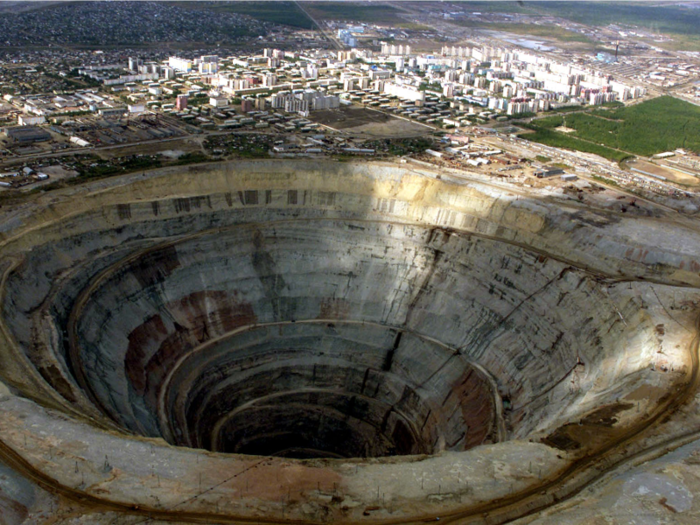
Alrosa is the world's largest diamond miner by volume.
The Sakha Republic, also known as Yakutia, is a region in Siberia that's five times the size of France but has only about a million inhabitants.
On a recent trip to Russia, I got the chance to follow the path of a diamond from the mines of Siberia, to ore enrichment and sorting facilities in the mining town of Mirny, to a cutting and polishing center in Moscow.
Alrosa operates 12 diamond mines, both underground and open-pit mines, 10 of which are in Yakutia.
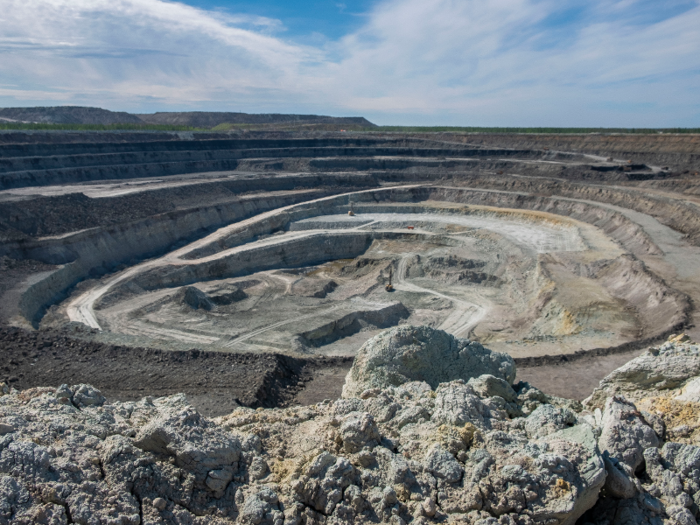
To create the mines, Alrosa must first scan for pipes of kimberlite ore, which is the ore that can contain diamonds.
Once a pipe is found, explosives are detonated to remove some of the empty soil on the surface, which is then discarded in piles nearby.
Then come the excavators and trucks to haul out the soil and the kimberlite ore, which is what contains the diamonds.
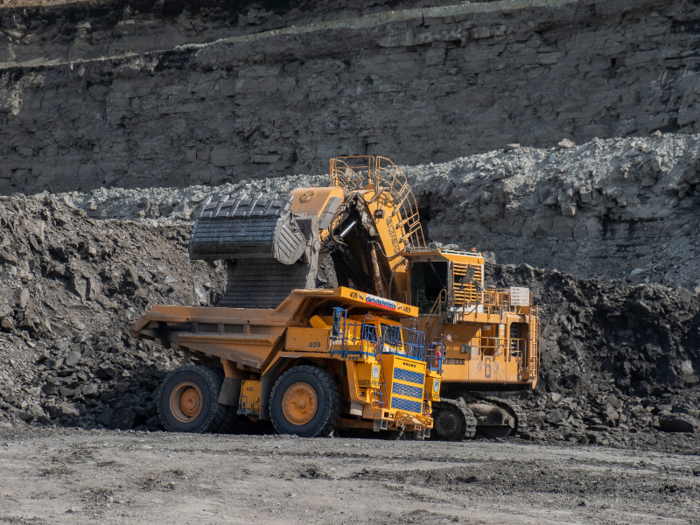
Each excavator bucket holds about 30 tonnes — more than 66,000 pounds — of soil or ore.
And one truck can be loaded up with three buckets full of soil, or more than 200,000 pounds.
At the Botuobinskaya open-pit mine, which I visited in Yakutia, about 60,000 metric tonnes — or more than 66,000 US tons — of soil and ore are extracted in a 24-hour period.
Once an open-pit mine has been depleted, it's typically turned into an underground mine and operations continue below the surface.
It takes a truck 40 minutes to take a round trip to the bottom of the mine and back.
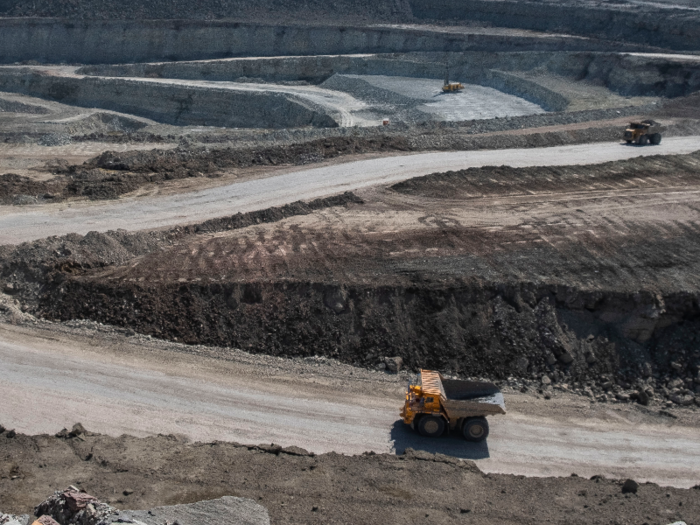
Some trucks carry empty soil to dump nearby, while others carry kimberlite ore to the factory for the ore enrichment process, to separate the rough diamonds from the other stones.
The miners excavate roughly five times more soil than ore, so most of the soil has to be discarded.
This is what kimberlite ore, the igneous rock that can contain diamonds, looks like.
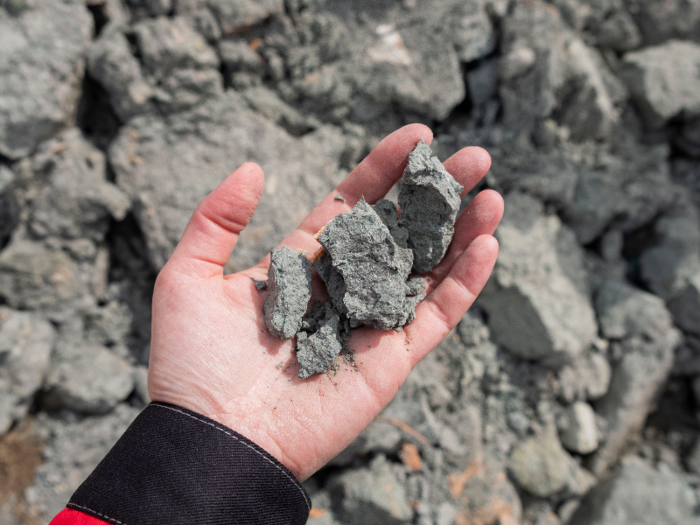
Of course, you can't see diamonds because they're hidden away inside and must be extracted.
The ore just felt like a particularly crumbly handful of rocks and dirt.
The trucks take the kimberlite ore to a factory for the treatment process, during which the diamond are extracted. The facility is about a 10-minute drive from the mine I visited.
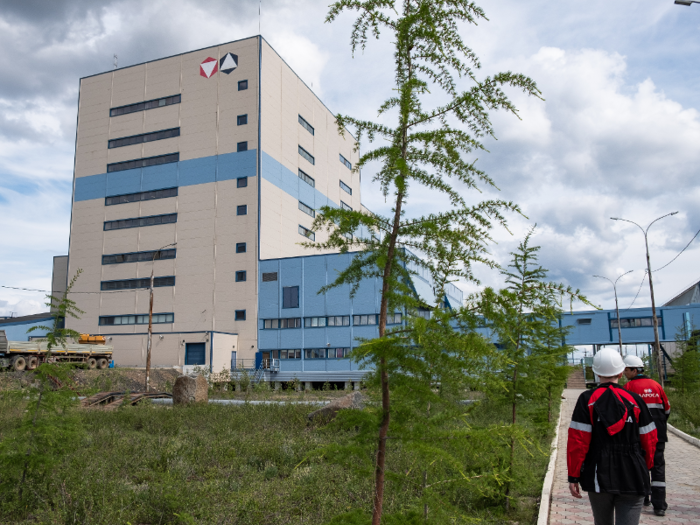
The ore treatment is a mostly automated process. At this factory, about 6,600 US tons of ore are processed every single day — and it's one of the smaller facilities.
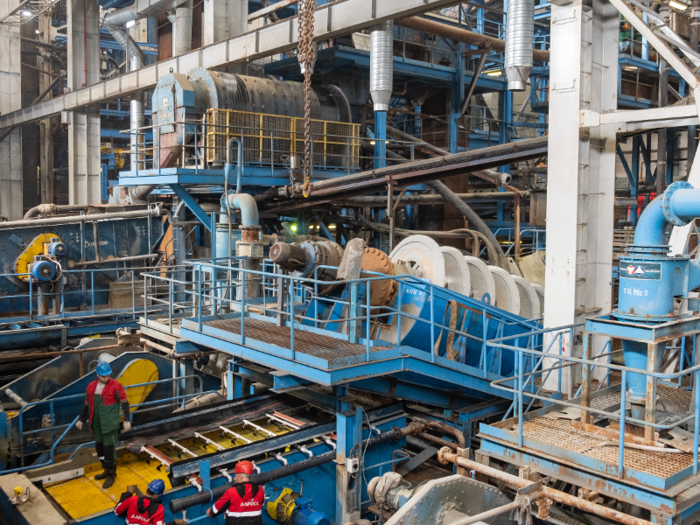
The factory operates 24/7, although they shut it down for 12 hours every two weeks for maintenance.
In the first stage of ore treatment, huge chunks of ore are whittled down to pieces no bigger than about five centimeters, or two inches, first using jaw crushers and then through a "wet milling" process, which uses water to break down the lumps of ore even smaller.
The second step is to extract the diamonds from the ore, which can be done in one of three ways:
- X-ray separation: Diamonds glow when they're under X-rays, so the diamond-filled ore is X-rayed while moving along a trough, and a special tool cuts the illuminated gems away from the ore using a stream of compressed air.
- Foamy separation: Smaller pieces of ore are put into a froth flotation machine, where small diamonds attach to froth bubbles and are carried to the final concentration stage, while other particles that don't contain diamonds settle to the bottom.
- Heavy separation: Medium-sized chunks of ore are processed in jigging machines and dense media separation units that use pulsating jets of water to separate the diamonds from the ore.
Even though almost the entire process is automated, Alrosa employees keep a close eye on the process from the control room, which shakes and creaks from the machinery operating around it.
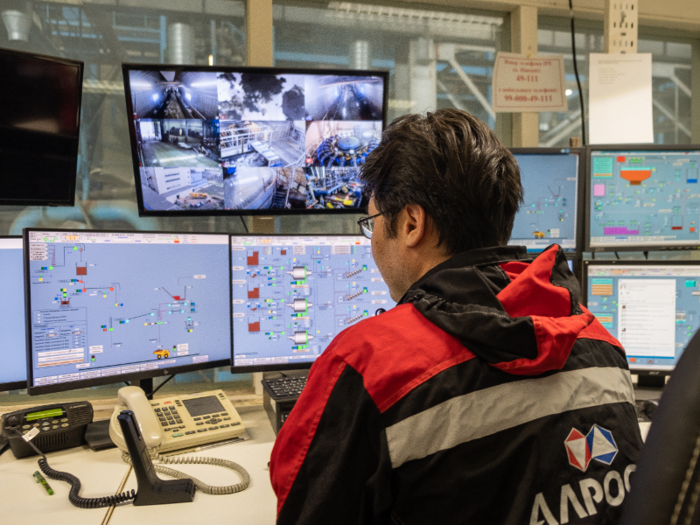
After the diamonds are finally extracted from the ore, they are cleaned, roughly sorted, and packed into containers to go to the sorting facility.
The sorting facility is in Mirny, the diamond mining town where many miners and other employees live. It's about 300 kilometers, or almost 200 miles, from the ore treatment facility.
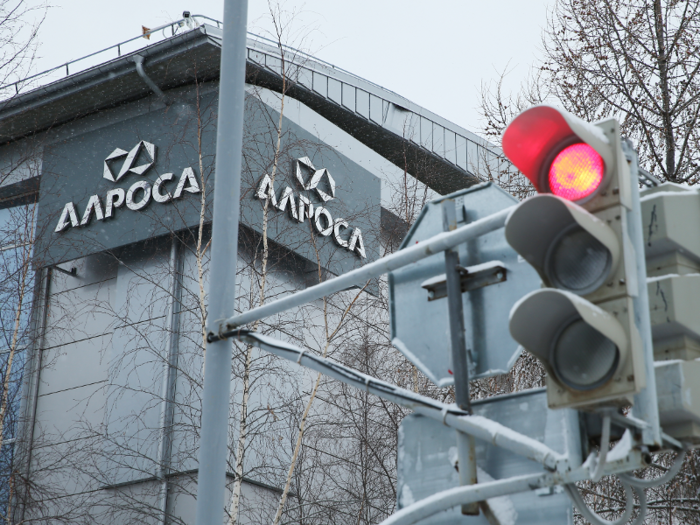
Diamonds arrive at the sorting facility regularly, but not every day.
For security reasons, Alrosa does not disclose how diamonds are transported from one place to another.
At this facility, diamonds are sorted by size, color, and quality.

The smaller stones go into machines that sift them through holes of varying diameters, sorting them into nine different size groups.
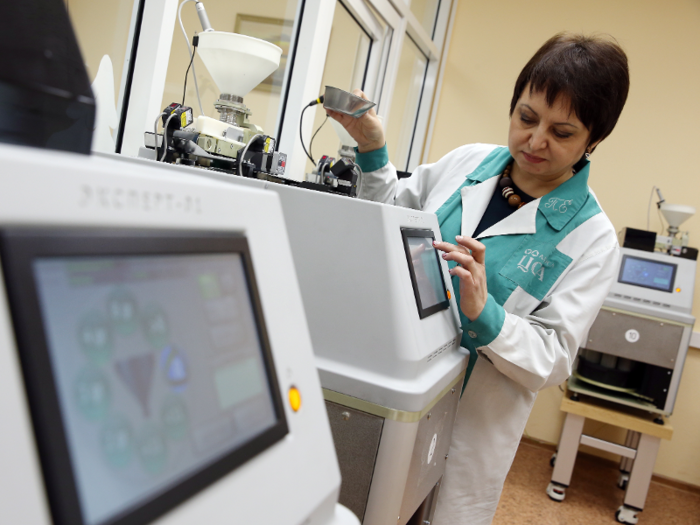
Larger stones are weighed for carat size in other machines.
Once they're sorted, the larger diamonds — stones that are 10.8 carats or bigger are considered "special size" diamonds — are cut, polished, and sold at international auctions like Christie's.
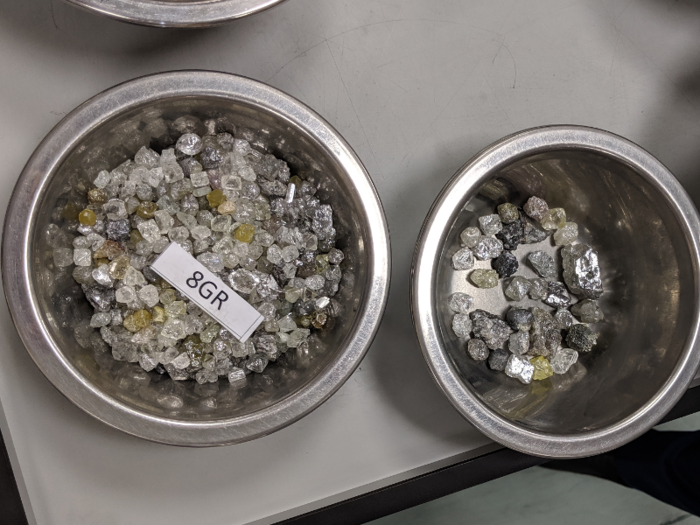
The smallest gems are sold rough — or unpolished — in bulk for industrial use, such as being embedded in grinding wheels, saw blades, and drill bits to be used for cutting and grinding hard materials.
After the preliminary sorting in Yakutia, the diamonds are transported almost 6,000 miles — a six-hour flight — to Alrosa's facilities in Moscow for evaluation, cutting, and polishing.

Security was tight at the facility in Moscow. We had to submit our passport to be checked, and I could only bring my camera and phone inside with me. Even my small bag had to be left outside.
Here, the first stage is evaluating the diamond.
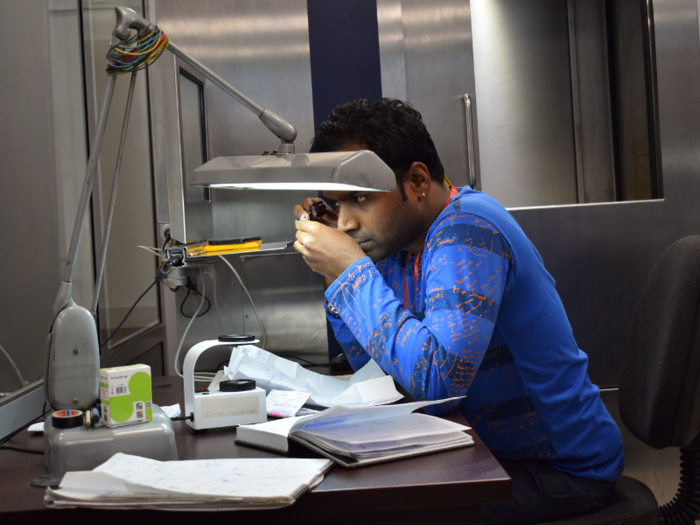
Evaluation entails trying to forecast the price of the stone and the number of diamonds you can get out of it. One rough stone can be as many as 10 or 12 polished diamonds.
One part of evaluation is a 3D scan of the diamond to see the potential size and shapes that will come out of it.
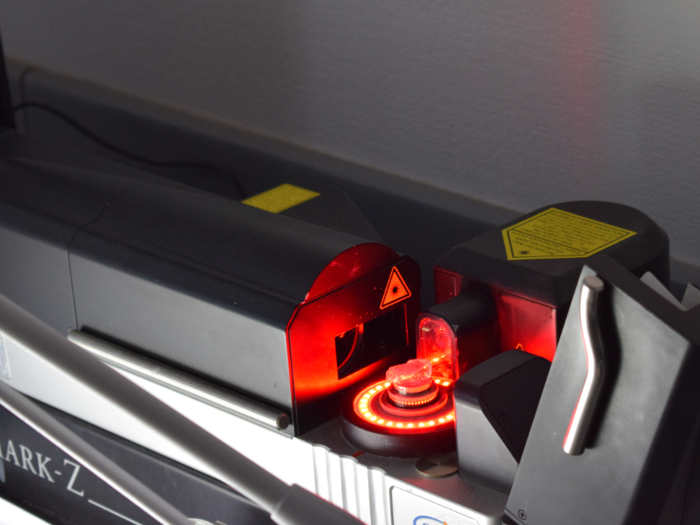
A special software called Sarine breaks down the potential diamond size, shapes, and prices.
"Everything is done to maximize the prospect revenue," an Alrosa employee told us.
The next step is cutting the rough diamonds, which is done using water lasers and can take months or even years.
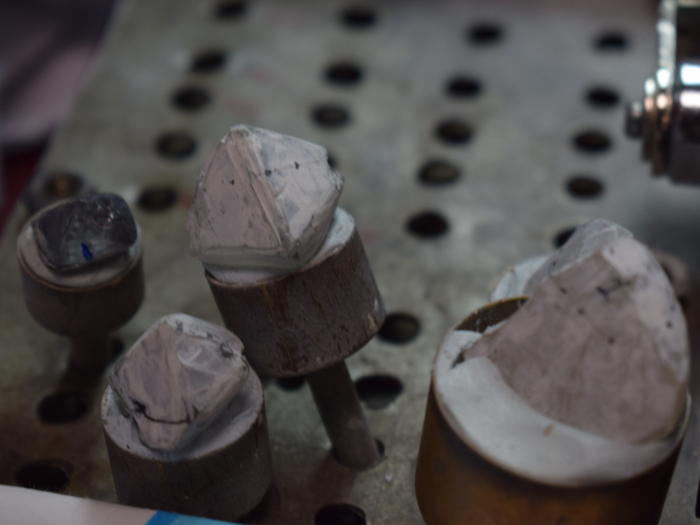
"With diamonds, every time you make a decision, there's no way back," an Alrosa employee told us. "You know your decision can cost $1 million ... So that's why it's so hard and can take months."
Becoming a diamond cutter entails about six months of training and then a five-year apprenticeship, according to Alrosa. Some cutters specialize in particular shapes, such as only round diamonds or only heart-shaped diamonds.
After being cut, the diamonds are bruted, or formed into their preliminary shapes.
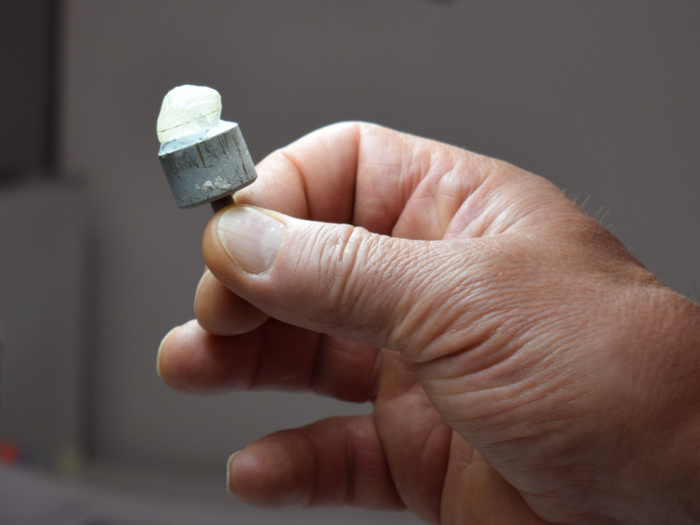
And finally, in the final stage, the diamond is polished using a spinning grading wheel coated with a special paste that's made of diamond dust.
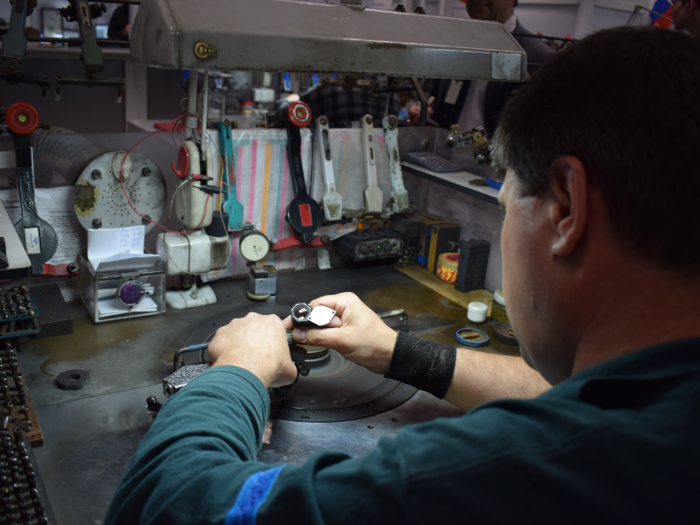
Essentially, diamonds are polished by other diamonds.
Most of the gems Alrosa sells are rough diamonds, which means the stones have not yet been cut or polished. They sell most of these unpolished diamonds in bulk for industrial use to clients with whom they have long-term contracts.
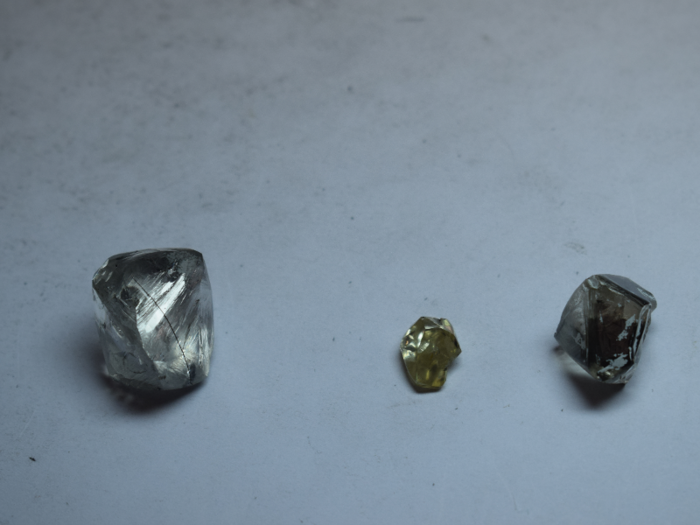
Alrosa has about 65 clients under long-term contracts, which accounted for 77% of rough diamond sales in 2017, according to the company.
Jewelers generally bid on these rough diamonds by the box rather than buying individual stones.
In September 2019 alone, Alrosa sold $256.5 million worth of rough diamonds, according to the company.
But larger diamonds, those that are 10.8 carats or bigger and are considered "special size diamonds," are sold at international auctions.
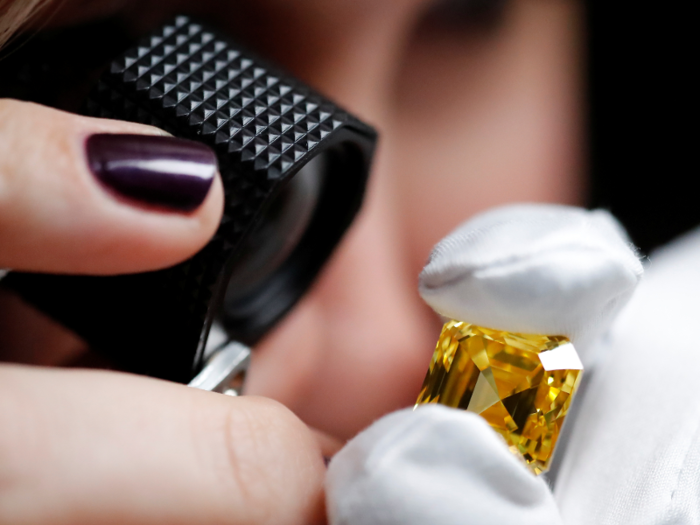
In September 2019, Alrosa sold $2.2 million of polished diamonds.
In March 2019, Alrosa held a rough diamond auction in New York City that brought in $11.8 million.
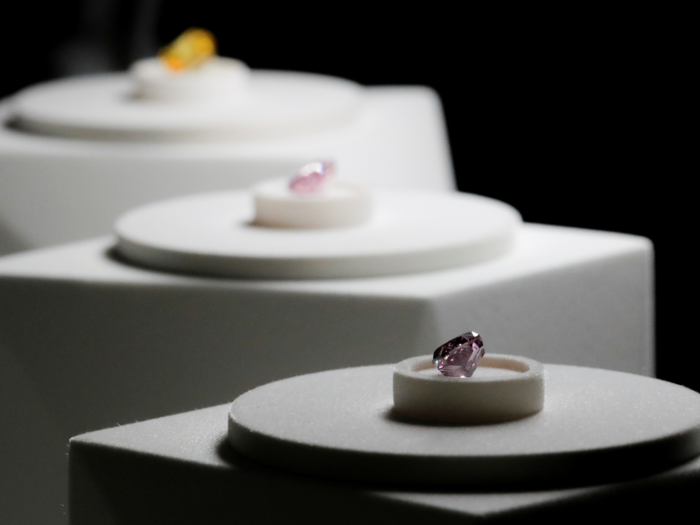
The company is trying to boost its name recognition in the US, as the head of its North American division, Rebecca Foerster, told Business Insider's Richard Feloni earlier this year.
As of October, Alrosa had sold more than $2.4 billion worth of rough and polished diamonds in 2019.
Popular Right Now
Popular Keywords
Advertisement